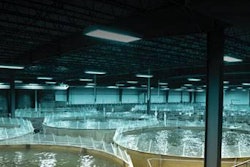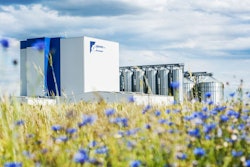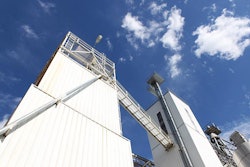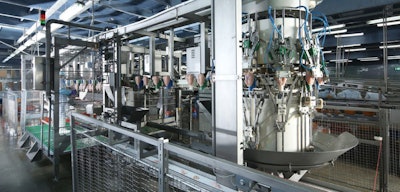
Shrinking protein consumption might become a challenge for the Russian feed industry.
Feed mills in Russia have only been slightly touched with the COVID-19 so far, but the economic turmoil the pandemic could bring in the coming months or even years might be one of the biggest threats the feed industry encountered in the past few decades.
The food industry has not been subjected to the nationwide holiday introduced by Russian President Vladimir Putin on March 28 to slow down the spread of the COVID-19 in the country. With some minor exceptions, all farms, feed mills, slaughterhouses and processing plants were allowed to continue business as usual, while adhering to enhanced sanitary measures to protect its staff.
For example, Gatchinsky Feed Mill, one of the largest feed producers in Russia, has switched a third of its staff to remote work, but was able to maintain production nearly at the same level as before the pandemic, said Dmitry Kulagin, general director of the plant. There were no problems with demand since most companies buying feed keep running as usual, he added.
Fluctuations of the exchange rate of the Russian ruble in the past few months brought more problems to the Russian feed producers than the COVID-19, according to Kulagin.
The companies in the industry have no rainy-day funds, so they have to change the price tags for their products when the costs are going up, he explained. So far, however, no big changes have been seen in the monthly price dynamics on the Russian feed market.
The wholesale price of feed in Russia has been seen slightly rising since the beginning of the year. For instance, the price of cattle feed climbed to RUB13,797 (US$184) per metric ton in March, by 9% more than in December 2019. The price of pig feed reached RUB16,170 (US$216), rising by 3% as compared to December 2019, the Russian government estimated.
The price of poultry feed in February 2020 increased for the first time since July 2019 and totaled RUB17,895 (US$239) per metric ton, which was almost the same level as in December 2019.
And yet the growth of prices seems to be inevitable. According to Dmitry Grachev, chairman of the Russian National Feed Union, in the next few months, the price for premixes on the Russian market was expected to go up by at least 25% driving the price hike for feed on the domestic market. Grachev went on saying that the Russian ruble depreciation and instability on the global feed additives market were the main factors to blame for the anticipated upward price rally.
Additionally, the price of wheat on the domestic market reached RUB15,000 (US$208) in April – the highest level ever seen, the Russian Union of Grain Producers estimated. Russian Agricultural Ministry has even introduced a 7 million export quota for April to June to maintain price stability on the domestic market.
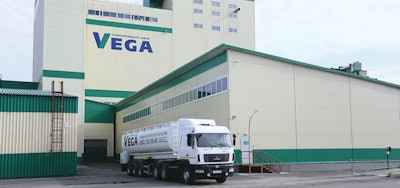 Feed mills in Russia so far have not been affected by COVID-19. (Courtesy Vega)
Feed mills in Russia so far have not been affected by COVID-19. (Courtesy Vega)Protein consumption follows the economy
Although there are no big disruptions with feed production in Russia, the costs are expected to rise across the supply chain. Russian food companies are poised to raise prices by 7% to 20% in the next few months, said Dmitry Vostrikov, general director of the Russian Food Producers Union.
Russian Federal Antimonopoly Service has already approved the upcoming price hikes as long as it has natural reasons, Vostrikov added.
The COVID-19, coupled with the fall of the global oil prices, which is the main source of income for the Russian treasury, could become a heavy burden for the Russian economy. According to Sergey Levin, deputy Russian Agricultural Minister, the pandemic could hamper the purchasing power of the population and cause a slump in demand on the food market.
If that forecast comes true, that would be the first economic crisis since the 1990s affecting the domestic protein consumption, which has not been significantly affected either during the financial crisis of 2008 or during the Russian financial crisis of 2014.
One part of the problem is that the purchasing power of the Russian population could drop by 9.9% because of the COVID-19 pandemic in 2020, the Moscow-based think tank AKRA estimated.
On this background, the Russian Union of Meat Producers and the Russian Union of Dairy Producers Soyuzmoloko have filed an opened letter to the government asking to approve a food stamps program earlier proposed by the Russian Agricultural Ministry.
Under this program, the government would pay up to RUB800 billion (US$11 billion) in May-December 2020 in the form of financial help to 10 million citizens with low incomes, the letter said. This measure would help the companies in the Russian food industry and allow them to save jobs, the letter added.
The biggest Russian meat producer, Cherkizovo, supported the proposal to introduce the food stamps, said Sergey Mikhailov, general director of the company. Giving the current social and economic conditions, affected with the COVID-19 epidemic, the necessity in this measure has emerged, he added.
Russian company EcoNiva, which is harboring plans to become the world’s biggest milk producer, also spoke in support of the food stamps program. According to Stephan Durr, president of EcoNiva, giving the existing market conditions, the food stamps could help both consumers and producers.
To prevent the turbulence on the food market, Russian lawmakers also called to freeze prices on the domestic market. The idea has been preliminarily approved by the Russian Prime Minister Alexey Mishustin during a government meeting on April 9, but it has been lambasted by most food companies.
The rising price for feed, fuel and logistics, together with the price regulation, would create price scissors, stated a source in the Russian food industry who wished to not be named. This would mean that the business would be obliged to pay out of pocket for maintaining consumption in the country, the source added.
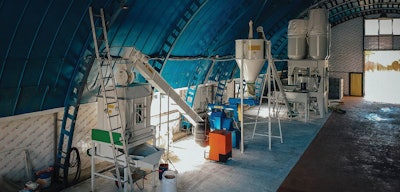 The future of the Russian feed industry remains uncertain as Russia may experience a slump in protein consumption for the first time in two decades. (Courtesy Doz Agro)
The future of the Russian feed industry remains uncertain as Russia may experience a slump in protein consumption for the first time in two decades. (Courtesy Doz Agro)Looking into a crystal ball
It is yet to be seen whether the crisis could impact the long-term forecasts of the Russian feed production growth. Russian Union of Feed Producers expects the industry could boost production from 30 million tons in 2020 to 38-40 million tons in 2025.
Russian customers are switching to cheaper sources of protein, like poultry and pork, on which price increase is unlikely to happen since the supply is above the demand, commented Lybov Savkina, commercial director of the Russian consulting agency Feedlot. This means that some further development could be expected in the poultry and pork industries, but not in the beef industry, Savkina added.
On the other hand, the livestock industry has chances to hold out on the export supplies, she said.
In the feed production, some negative dynamics could likely be seen with some delay, but already market participants evidence a shortage of feed vitamins and amino acids, Savkina said.
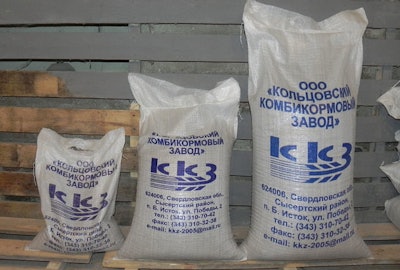 Demand for animal feed in Russia is expected to increase. (Courtesy Koltsovo feed mill)
Demand for animal feed in Russia is expected to increase. (Courtesy Koltsovo feed mill)

